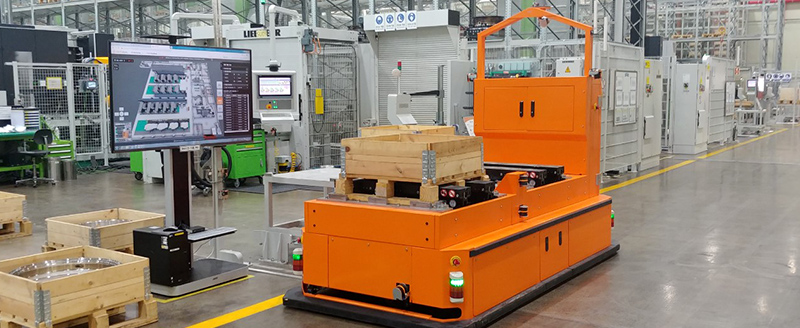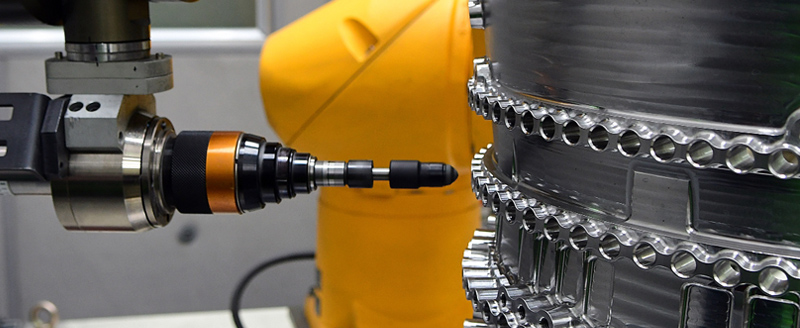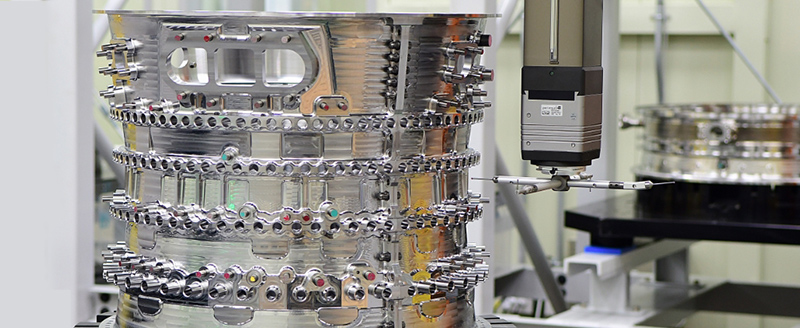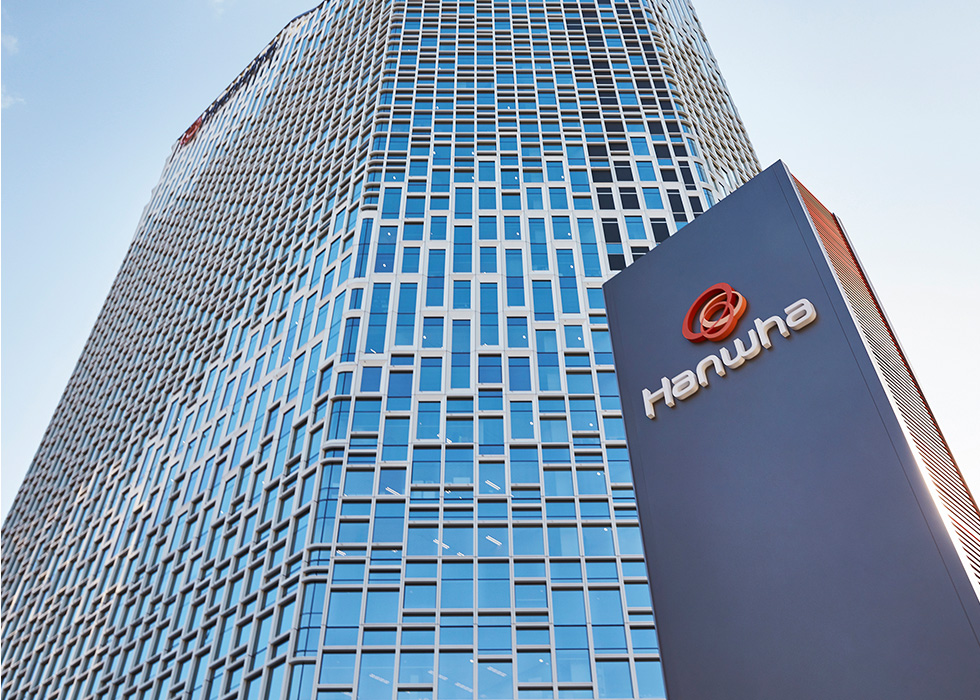Pinpoint Precision: Hanwha Aerospace Flies High Through Automation
For the average air traveler, settling into their seat before departure, the question, “Who built this plane?” probably never crossed their mind.
The answer is much more complex than one might initially presume.
Most people have heard of Boeing and Airbus.
However, behind these manufacturers, there is an entire legion of companies that produces the vital parts and components needed to keep planes rolling out from the factories and onto the runway.
Hanwha Aerospace is quickly rising and establishing itself as a top player in the aerospace industry. It is relied upon by the world’s leading aerospace companies for its technological prowess and stringent focus on quality control.
A trusted partner to the world’s leading aerospace companies
Hanwha Aerospace has been a trusted supplier and partner to the world’s top three aircraft engine manufacturers–General Electric (GE), Pratt & Whitney and Rolls-Royce for more than three decades.
As a sign of great trust, Pratt & Whitney entered into a risk & revenue -sharing program (RSP) with Hanwha Aerospace in 2015 and 2016. GE relies on Hanwha Aerospace to supply it with crucial components for its most advanced GE9X engines, having signed a new contract worth USD 300 million in 2019. That same year, Rolls-Royce deepened its relationship with Hanwha Aerospace, one of its top-ten suppliers. Now a member of Rolls-Royce’s Life of Engine Program, Hanwha Aerospace will provide cutting-edge Trent-series turbine engine components.
What allows Hanwha Aerospace to build and establish its reputation for quality and reliability?
The answer lies in the company’s impressive automated capabilities that enhance human ability to produce top-quality aircraft engine components.
Automating to prepare for the future
There is very little room for error in the aerospace industry. So, at its flagship manufacturing facility in Changwon, South Korea, Hanwha Aerospace invested USD 85.4 million to construct an 11,000 m² smart factory. All the automated systems in the smart factory allow Hanwha Aerospace employees to work more efficiently and precisely while providing tighter quality control.
The highly automated nature of the Changwon smart factory is a result of Hanwha Aerospace’s long-term view. The company is intent on ensuring its production capabilities will remain on the cutting edge even thirty or forty years in the future.
With a spacious and brightly lit interior, the smart factory acts as a showcase for Hanwha Aerospace’s technological capabilities. It is filled to the brim with automated equipment that handles a large portion of the work which happens inside.

An automated guided vehicle delivers an engine component to a workstation at Hanwha Aerospace’s flagship plant in Changwon, Korea
Bright-orange automated guided vehicles (AGVs) glide along the floor. Using a collection of sensors and laser tracking, they bring in supplies from warehouses and move parts from one workstation to the next.
Elsewhere in the smart factory, cobots, or collaborative robots, which are robots that can safely operate around humans, are hard at work. They systematically work on racks full of freshly cut aircraft engine components, precisely machining each and every one.
Maintaining precision and consistency at all times

A robotic arm precisely trims excess metal off the internal casing of a gas turbine engine at Hanwha Aerospace’s Changwon smart factory
At the Changwon smart factory, Hanwha Aerospace uses the Flexible Manufacturing System (FMS). This allows the company to manage operations from a central location and improve overall quality control.
The FMS monitors and maintains more than 80 different pieces of high-tech equipment, including the smart factory’s AGVs, and the robots/cobots responsible for assembly, grinding, and welding to ensure consistent production.
Most importantly, the FMS uses an extensive array of temperature sensors to maintain a precise interior temperature of 21-degrees Celsius 24-hours a day. This is vital when producing aircraft engine components. Even the slightest difference in the Changwon smart factory’s interior temperature can cause metal parts to warp and render them useless.
“The components we produce must operate flawlessly at
temperatures exceeding 1,400 degrees Celsius.
With some of those components, our margin-of-error is one micron.
To compare, a human hair can be anywhere from 30 to 100
miracons in thickness.”
-Sang-kyun Gam, General Manager at Hanwha Aerospace
“The components we produce must operate flawlessly at temperatures exceeding 1,400 degrees Celsius. With some of those components, our margin-of-error is one micron. To compare, a human hair can be anywhere from 30 to 100 microns in thickness,” explained Sang-kyun Gam, General Manager at Hanwha Aerospace.
“The FMS allows us to control what goes on in the smart factory with great precision,” he continues. “Because even a one-degree deviation in the interior temperature can cause enough metal expansion to make it impossible for parts to fit together precisely.”

A 3D-inspection machine takes measurements of the interior casing of a gas turbine engine manufactured at Hanwha Aerospace’s Changwon smart factory
Maximizing quality through data analysis
To be even more precise in how it operates, Hanwha Aerospace implemented a digital twin-monitoring system at its Changwon smart factory. The digital twin provides an easy-to-understand platform from which operators can track the performance and capacity of each work station and quickly notice if anything needs additional human attention.
In near real-time, the digital twin utilizes loT technology to
monitor warehouse stocks, the location of each AGV and
progress of each component in production, and any possible defects.
This data is updated more than 20 times per second.
In near real-time, the digital twin utilizes IoT technology to monitor warehouse stocks, the location of each AGV and progress of each component in production, and any possible defects. This data is updated more than 20 times per second and shown on a digital depiction of the smart factory that can be toured through a computer interface.
“The digital twin allows us to see everything that’s going on at the smart factory. It makes it much easier for us to analyze our performance,” says Hyung-wook Nam, Managing Director of Production at Hanwha Aerospace. “We plan to build on this and develop an analytical AI system on top of the digital twin so we can get even better at catching product defects and preventing accidents.”
Aiming high, growing further
As aircraft technology keeps advancing, the components used in aircraft construction must progress alongside it. Hanwha Aerospace will stay ahead of the technological curve to continue distinguishing itself in the aerospace industry. It is already undertaking fact-finding trips around the world to benchmark other smart factories and find innovations to implement in Changwon.
Hanwha Aerospace
Hanwha Aerospace began operations in 1977, producing aircraft engines and film cameras. Since then, it has aggressively invested in R&D to grow into a major presence within the aircraft/gas turbine engine industry. Hanwha Aerospace’s dramatic evolution was made possible by the successful development of industry leading and proprietary technologies that give it the competitive edge needed to succeed around the world. In addition to technological advancement, Hanwha Aerospace also focuses on developing industry expertise and the ability to comprehensively address changing market demands as well as the ability to anticipate future market shifts.
For more information, visit: www.hanwhaaerospace.com
Get the latest news about Hanwha, right in your inbox.
Fields marked with * are mandatory.
- Non-employee
- Employee




